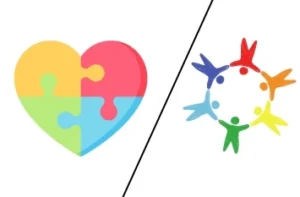Living with Borderline Personality Disorder (BPD) can present unique challenges, but with the right coping strategies, individuals can manage their symptoms and improve their overall well-being.
Here are some effective coping strategies for Borderline Personality Disorder:
Dialectical Behavior Therapy (DBT): DBT is a well-established therapeutic approach designed specifically for individuals with BPD. It focuses on enhancing emotional regulation, interpersonal effectiveness, distress tolerance, and mindfulness.
Mindfulness and Meditation: Practicing mindfulness can help individuals with BPD become more aware of their thoughts and emotions without judgment. Meditation techniques can promote relaxation and reduce the intensity of emotional responses.
Establishing Routine: Creating and adhering to a daily routine provides structure and predictability, which can be comforting for individuals with BPD. Consistency in daily activities contributes to a sense of stability.
Building a Support System: Developing a reliable support network is crucial for individuals with BPD. Having understanding friends family, or participating in support groups can offer validation, empathy, and encouragement.
Emotion Regulation Techniques: Learning to identify and regulate emotions is essential. Techniques such as deep breathing exercises, progressive muscle relaxation, and journaling can be valuable tools for managing intense emotions.
Setting Boundaries: Establishing and maintaining healthy boundaries in relationships helps prevent feelings of rejection or abandonment. Clear communication about personal limits fosters more stable and fulfilling connections.
Self-Care Practices: Prioritizing self-care is vital for individuals with BPD. Engaging in activities that bring joy, relaxation, and a sense of accomplishment contributes to overall mental well-being.
Medication Management: In some cases, medications may be prescribed to address specific symptoms associated with BPD, such as mood swings, anxiety, or depression. It is important to consult with a mental health professional to determine the most appropriate medication plan.
Problem-Solving Skills: Developing effective problem-solving skills can empower individuals with BPD to address challenges in a constructive manner, reducing feelings of helplessness.
Educating Yourself: Learning more about BPD and its symptoms can empower individuals to understand and manage their condition better. Education fosters self-awareness and equips individuals to make informed decisions about their mental health




